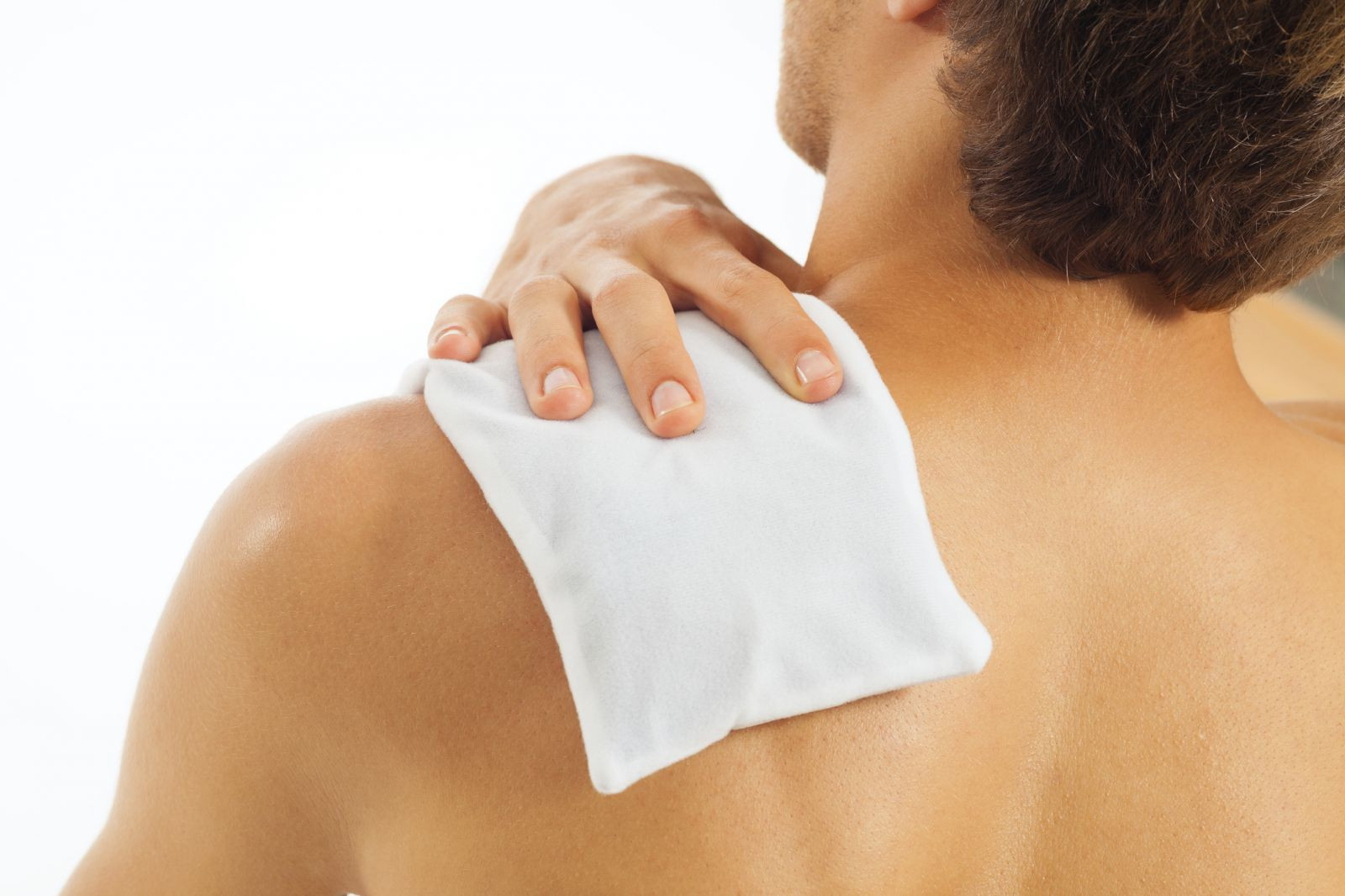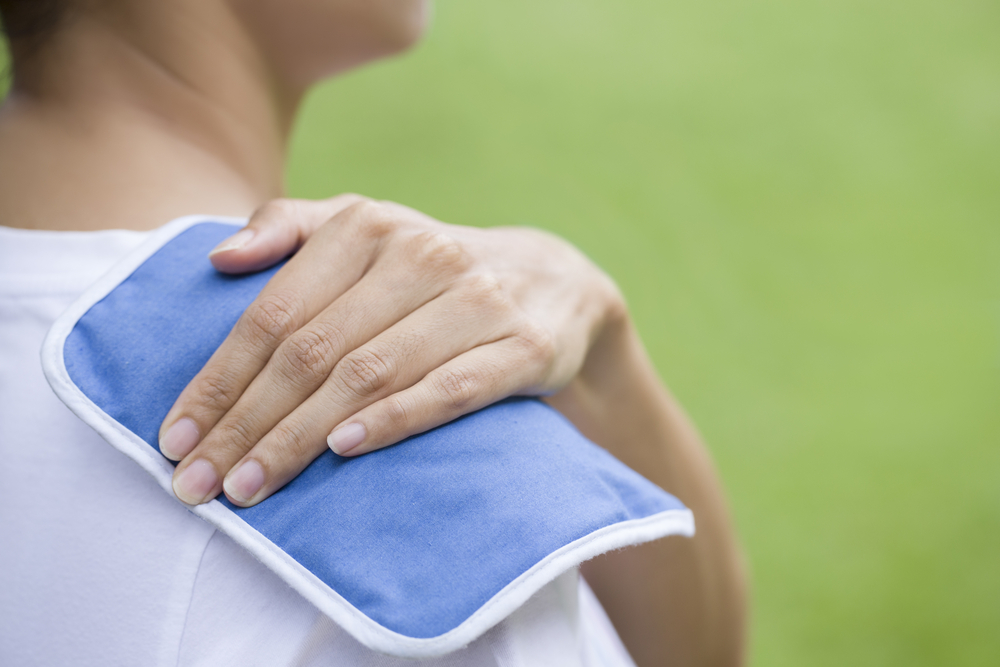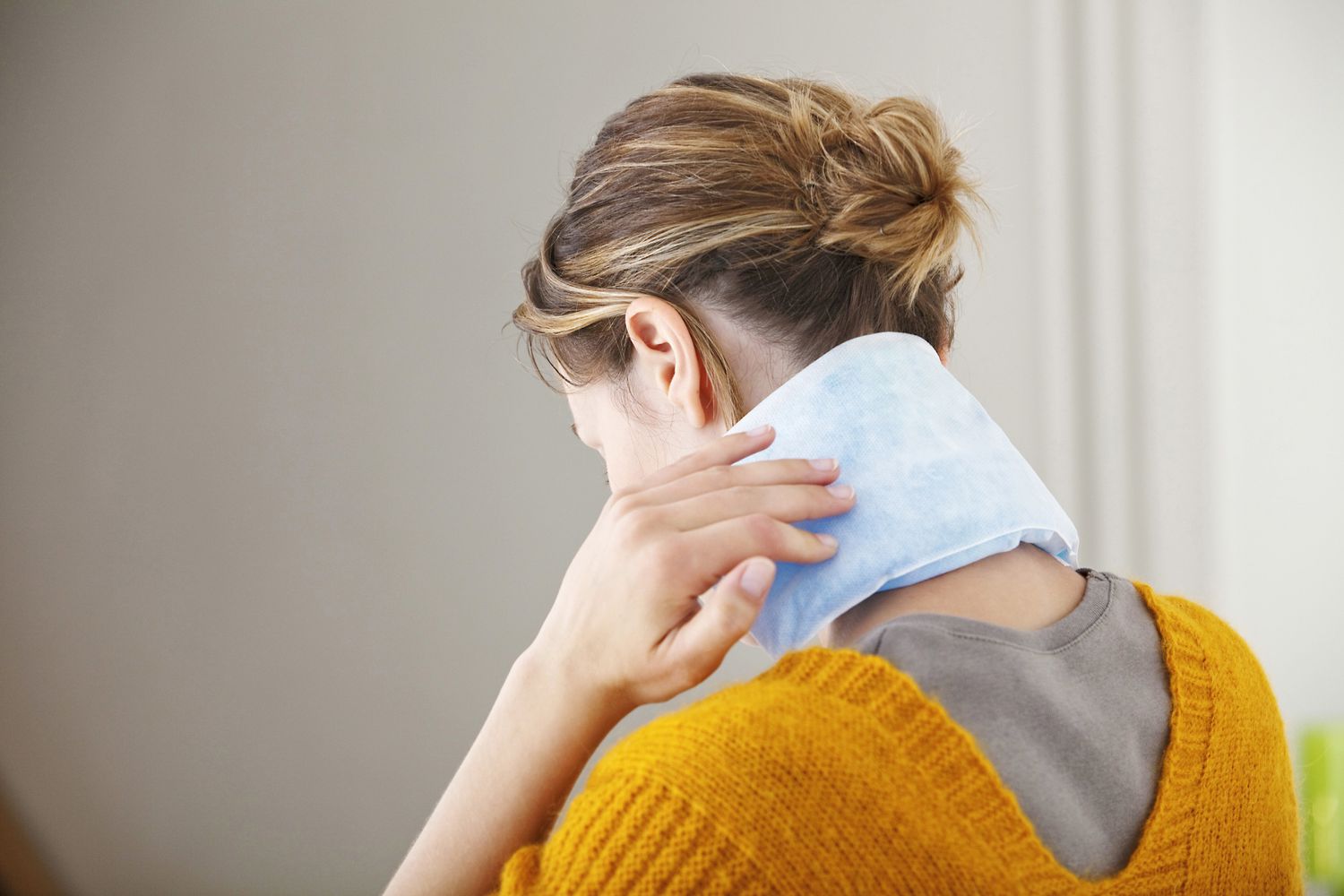7 Heat Therapy Benefits - Enhancing Well-Being Naturally
Unlock a world of well-being with heat therapy benefits. From soothing muscle pain to enhancing sleep quality and promoting mental health, discover the transformative advantages of heat therapy for a healthier, revitalized you.
Author:Katharine TateReviewer:Karan EmeryMar 01, 20245.1K Shares77K Views

A soft, warm heating pad that is wrapped around a tight shoulder. There are a lot of heat therapy benefitsfor your physical and mental health. You can feel these effects right away and over time. A lot of people know that heat therapy can help with new injuries, but sometimes people forget that it can also help with long-term pain.
A study from the U.S. Pain Foundationin 2020 found that heat and cold therapy is the most popular way for people with chronic pain to feel better. Around 1,600 people answered, and 67.8% said they use heat therapy at least once a week. Another 44.9% said they use cold treatment at least once a week.
Types Of Heat Therapy
Heat therapy is a therapeutic approach that leverages increased temperature to enhance circulation and blood flow to specific areas of the body, resulting in various health benefits. Elevating the temperature in the affected region, even modestly, can effectively alleviate discomfort and promote greater muscle flexibility, ultimately aiding in the healing process of damaged tissue.
There are two primary categories of heat therapy: dry heat and moist heat, both targeting an optimal temperature of warmth rather than excessive heat
- Dry heat -also known as "conducted heat therapy," involves applications such as heating pads, dry heating packs, and saunas. This type of heat therapy is easily applicable and can be a convenient option for targeted relief.
- Moist heat - referred to as "convection heat," utilizes sources like steamed towels, moist heating packs, or hot baths. Moist heat is considered slightly more effective and often requires less application time to achieve comparable results. This method can provide a soothing and penetrating warmth, making it a preferred choice for some individuals.
Professional heat therapy treatments, such as ultrasound heat, can be employed for specific conditions like tendonitis, further expanding the range of therapeutic options available. The targeted application of heat can effectively alleviate pain and contribute to the overall healing process.
When implementing heat therapy, one can choose from local, regional, or whole-body treatments based on the nature and extent of the discomfort. Local therapy is suitable for addressing small areas of pain, such as a single stiff muscle, using methods like heated gel packs or hot water bottles. Regional treatment is ideal for more widespread pain or stiffness, utilizing larger heating pads, steamed towels, or heat wraps.
Heat Therapy Speeds Up The Healing Process
The application of heat therapy expedites the healing process by promoting enhanced blood circulation to the lower back muscles. This heightened blood flow facilitates the delivery of increased amounts of oxygen, white blood cells, platelets, and essential nutrients to the affected area, contributing to the repair and healing of damaged tissues.
When heat is applied, sensory nerves react by releasing chemical messengers that cause the dilation of local blood vessels, resulting in an accelerated blood flow. Both the applied heat and the augmented blood flow contribute to raising the skin temperature to align with the body's core temperature. Once the skin reaches this core temperature, excess heat is absorbed by the blood, safeguarding the skin against potential burns.
Furthermore, the heat penetrates from the skin surface deep into the muscles, enhancing blood circulation within the muscular tissues. This process involves overcoming the obstacle of the fat layer beneath the skin, which may pose challenges for effective heat therapy, particularly in individuals with a thicker fat layer.
It Eases Lower Back Pain And Stiffness
For individuals grappling with persistent lower back pain and stiffness, heat therapy emerges as a cost-effective strategy to alleviate symptoms and enhance overall flexibility. By prompting the body to channel nutrient-rich blood to the damaged tissues around the spine, heat therapy accelerates the healing process of minuscule muscle tears. Additionally, thermotherapy induces warmth in the muscles and tendons of the lower back, rendering them more amenable to safe and effective stretching.
The application of localized heat packs directly on the affected area can be particularly beneficial in mitigating lower back pain, while options like hot tubs, soaks, or heated wraps also present valuable alternatives to promote relief and improved comfort.
Heat Therapy Makes Therapeutic Exercises More Tolerable
Integrating heat therapy into your regimen involves its application to the lower back just prior to a physical therapy session, and it is recommended to utilize heat therapy before engaging in exercises and stretching routines.
Moreover, incorporating regular heat therapy sessions at home proves instrumental in enhancing the ease with which exercises can be performed - not only during the immediate post-therapy period but also in the intervals between sessions and well beyond.
By promoting a more seamless and comfortable execution of exercises, consistent heat application becomes a valuable asset, ultimately contributing to an improved overall outcome in the realm of physical therapy for both neck and back pain.
Heat Boosts Immunity
The elevation of body temperature induced by external heat in heat therapy mirrors the physiological response of a fever, acting as a catalyst to stimulate the immune system on multiple fronts.
Scientific findings indicate that consistent engagement in specific heat therapies yields noteworthy benefits for immune function, including:
- Activation of the immune system- Hot baths, for instance, trigger the activation of monocytes, a specialized type of white blood cell. These activated monocytes play a crucial role in eliminating dead cells, combating infections, and releasing an increased quantity of cytokines. Cytokines, serving as small proteins, act as vital signaling molecules between immune cells and various cells within the body, orchestrating a coordinated immune response.
- Reduction in inflammatory markers- Regular sauna sessions have been linked to lower levels of C-reactive protein in the bloodstream, a biomarker associated with a robust immune system. Furthermore, consistent participation in balneotherapy, involving hot baths with mineral water, contributes to a reduction in the levels of interleukin-1 and leukotriene B4. Both of these proteins play pivotal roles in inflammation, and their decreased levels signify a mitigated inflammatory response, indicative of a strengthened immune system.
It Treats Muscle Spasms
Muscle spasms, characterized by sudden and involuntary contractions, serve as the body's urgent signal to cease immediate stress on the affected muscle group, often occurring when we abruptly overexert ourselves. These contractions are intense and incapacitating, prompting an immediate pause in activity as we instinctively grasp the affected muscle, such as experiencing lower back spasms or charley horse leg cramps in the calf.
For persistent and prolonged spasms lasting beyond a few minutes, the initial intervention involves applying ice in 20-minute intervals during the first three days. Subsequently, transitioning to heat therapy becomes integral for alleviating muscle tightness and fostering the healing process.
Opting for moist heat is advisable to prevent dehydration, and this can be achieved through methods such as a soothing hot tub soak or the application of a warm, damp cloth.
To Improve Sleep
Surprisingly, incorporating heat therapy, particularly in the form of a warm bath, can profoundly enhance the quality of your sleep.
This assertion finds support in a 1985 study published in the journal Electroencephalography and Clinical Neurophysiology, titled “Night-time sleep EEG changes following body heating in a warm bath.”The study investigated the impact of both warm and cool baths on sleep.
Interestingly, cool baths exhibited no significant influence on sleep patterns. In contrast, warm baths demonstrated substantial enhancements in various sleep parameters, including:
- Increased sleepiness at bedtime, indicating a smoother transition into the sleep cycle.
- Augmented Stage Three sleep, also known as slow-wave sleep or deep sleep, is associated with physical healing, growth, immune system regeneration, and energy restoration.
- Elevated Stage four sleep, recognized as the rapid eye movement (REM) stage, is linked to memory formation, learning, and mood improvement.
Treatment Of Depression
A compelling illustration is found in a 2017 study published in the journal BMC Complementary and Alternative Medicine, titled “Effects of hyperthermia on depression, sleep, and heart rate variability in patients with depressive disorder: a randomized clinical pilot trial.”
During this clinical trial, participants engaged in two hot baths per week over four weeks, while a control group received a placebo treatment. Remarkably, within this relatively brief timeframe, those who experienced the hot baths exhibited a significant reduction in depressive symptoms.
This evidence underscores the transformative potential of heat therapy in addressing mental health concerns. To harness these benefits at home, individuals can explore various methods such as hot tubs, saunas, or even tanning beds.
When Not To Use Heat Therapy?
There are specific scenarios where caution should be exercised, and heat therapy may not be the most suitable option. In cases where the area is bruised, swollen, or both, it is advisable to opt for cold therapy instead. Similarly, applying heat therapy to an area with an open wound is not recommended.
Individuals with certain pre-existing conditions should exercise caution when considering heat therapy due to an elevated risk of burns or complications associated with heat application. These conditions include diabetes, dermatitis, vascular diseases, deep vein thrombosis, and multiple sclerosis (MS).
If someone has heart disease or hypertension, it is crucial to consult with a doctor before incorporating heat therapy into their routine. Additionally, pregnant individuals should seek advice from their doctor before using saunas or hot tubs to ensure the safety of the therapy during pregnancy.
Risks Of Heat Therapy
When engaging in heat therapy, it's imperative to adhere to "warm" temperatures rather than excessively hot ones. Using heat that is too intense can lead to skin burns, underscoring the importance of maintaining a moderate temperature during therapy sessions. Additionally, in cases of infection, employing heat therapy may pose a risk of exacerbating the spread of the infection.
Local application of heat, such as with heating packs, should be limited to no more than 20 minutes at a time to prevent potential adverse effects. Vigilance is crucial, and if there is a noticeable increase in swelling during the therapy, it is advisable to discontinue the treatment immediately.
In instances where heat therapy fails to alleviate pain or discomfort after a week, or if the pain intensifies within a few days, seeking professional medical advice is essential.
Frequently Asked Questions
Can I Use Heat Therapy For Muscle Pain Every Day?
While daily use is generally safe, it's essential to monitor your skin and avoid prolonged sessions. Consult with a healthcare professional for personalized advice.
Is Heat Therapy Effective For Arthritis Pain Relief?
Yes, heat therapy can help alleviate arthritis pain by improving blood flow and reducing stiffness. However, it's crucial to consult with a doctor for a comprehensive pain management plan.
What's The Recommended Duration For Applying Heat Therapy?
It is recommended to limit heat therapy sessions to 15-20 minutes at a time. Prolonged exposure may lead to skin irritation or other complications.
Can Heat Therapy Be Used During Pregnancy?
Pregnant individuals should consult their healthcare provider before using heat therapy, especially in saunas or hot tubs, to ensure safety for both the mother and the baby.
Are There Any Specific Conditions Where Heat Therapy Should Be Avoided?
Heat therapy should be avoided in cases of swelling, open wounds, or certain medical conditions like diabetes, dermatitis, and vascular diseases. Consult a healthcare professional for personalized advice.
Conclusion - Heat Therapy Benefits
The myriad benefits of heat therapy extend far beyond mere relaxation. From soothing muscle pain and reducing inflammation to improving sleep quality and enhancing mental well-being, heat therapy proves to be a versatile and accessible tool for promoting overall health.
By understanding its diverse applications and adhering to safety guidelines, individuals can harness the transformative power of heat therapy to address a spectrum of physical and mental health concerns, fostering a path toward improved vitality and well-being.
Jump to
Types Of Heat Therapy
Heat Therapy Speeds Up The Healing Process
It Eases Lower Back Pain And Stiffness
Heat Therapy Makes Therapeutic Exercises More Tolerable
Heat Boosts Immunity
It Treats Muscle Spasms
To Improve Sleep
Treatment Of Depression
When Not To Use Heat Therapy?
Risks Of Heat Therapy
Frequently Asked Questions
Conclusion - Heat Therapy Benefits

Katharine Tate
Author

Karan Emery
Reviewer
Latest Articles
Popular Articles


